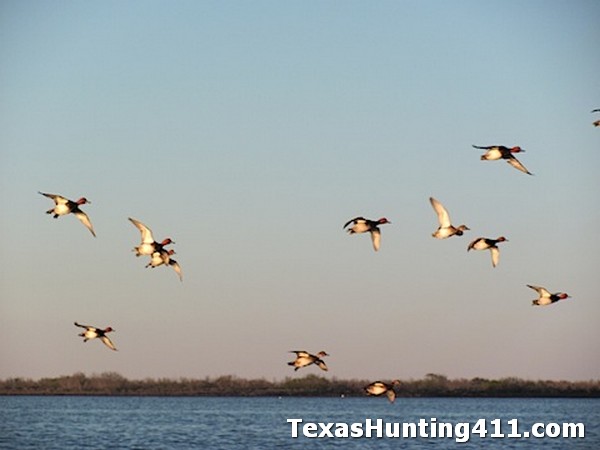Things have changed this year for ducks and duck hunters in Texas. We’ve had some rain, so there will be surface water for our migratory friends from the north! According to Mike Rezsutek, Texas Parks and Wildlife Department (TPWD) waterfowl biologist for the Upper Coast Wetlands Ecosystem Project, the tides have dropped and water levels in the J.D. Murphree Wildlife Management Area are dropping towards their target elevations.
“Chances are good that we’ll have favorable water conditions by the opening day of waterfowl season,” he predicted. “In the rice fields and other inland areas there is plenty of surface water at the moment, but that may change if the clouds stop dropping rain.”

Habitat conditions on the mid-coast range from fair to good depending on recent rainfall events, according to Matt Nelson, TPWD’s Central Coast Wetlands Ecosystem Project Leader, which includes Mad Island WMA. “Most of the mid-coast has received adequate rain over the past two months but there are still some key areas in need of additional precipitation,” Nelson noted. “Tides have been running high lately and have most of the coastal marsh full to capacity and the wigeon grass is starting to respond positively.”
Nelson went on to report the early teal season hunting on the mid-coast WMAs was slowed by lagging migration, but observations of large groups of blue wings using the marsh and large groups of pintails and gadwall arriving after the last cool front have him optimistic for the opener.
“We are starting to see some white-fronts on the coast as well,” he said. “In short, we could still use some rain in key areas along the coast but overall habitat conditions are fairly good. Now we need the birds to cooperate and migrate through.”
Additionally, the lower Texas coast south of Corpus Christi has received much needed rain in the last few weeks that has greatly increased the available fresh water on the landscape. That’s good news for redheads and pintail ducks that require frequent visits to fresh water after foraging on the sea grasses on the Laguna Madre.
In the eastern regions of Texas, things are also shaping up well, according to Jared Laing, TPWD waterfowl biologist. “We had well-timed rains that produced great food resources on most North Texas reservoirs,” said Laing. “Natural marshes are in decent shape, but some stayed too wet to grow adequate plants that waterfowl prefer. Managed wetlands are good to excellent, but due to the very wet growing season, some areas are late with food resources.”
Pineywoods reservoirs are another story, Laing noted. They stayed full all spring and summer for the most part and many are now covered with invasive aquatic plant species. Bird use on these should increase as winter progresses, vegetation decomposes, and open water becomes more available.
“Of course, as always, the quality of our season and bird densities on the landscape hinges on the amount of water on the landscape,” Laing pointed out. “Right now we’re sitting fair; we just need a good 4-6 inch rain event to boost North and East Texas wetlands as the birds arrive.”